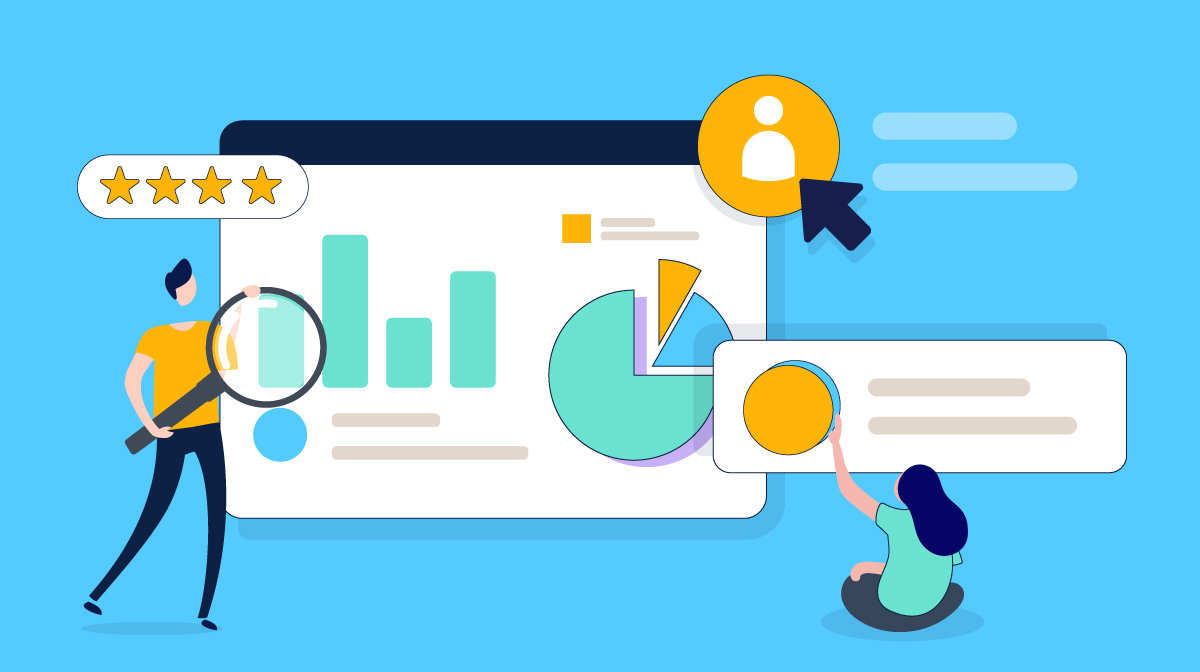In today’s hyper-competitive business landscape, staying ahead of the competition is crucial for sustained success. With the rise of digital marketing and online presence, businesses need powerful tools to analyze their competitors effectively. This is where competitor analysis software comes into play.
Introduction to Competitor Analysis Software

Competitor analysis software is a valuable tool that helps businesses gather and analyze data about their competitors’ strategies, strengths, and weaknesses. It provides actionable insights that businesses can leverage to refine their strategies and gain a competitive edge in the market.
Importance of Competitor Analysis in Business
Understanding the competitive landscape is essential for making informed decisions and staying relevant in the market. Competitor analysis enables businesses to identify market trends, customer preferences, and potential threats. By studying competitors, businesses can capitalize on opportunities and mitigate risks effectively.
Key Features to Look for in Competitor Analytics Platform
When choosing competitor analysis platform, it’s essential to consider the following key features:
- Comprehensive Data Collection: The software should gather data from multiple sources, including websites, social media platforms, and search engines.
- Competitor Comparison Tools: It should offer features for comparing key metrics and performance indicators against competitors.
- Customizable Reporting: The ability to generate customized reports and insights tailored to specific business needs.
- User-Friendly Interface: Intuitive interface and user-friendly dashboards for easy navigation and data interpretation.
Top Competitor Analysis Software Tools in the Market
Several competitor analysis software tools dominate the market:
- SEMrush: Known for its comprehensive keyword research and domain analytics.
- Ahrefs: Renowned for its backlink analysis and site audit features.
- SpyFu: Specializes in competitor keyword research and PPC analysis.
- SimilarWeb: Provides insights into website traffic, audience demographics, and engagement metrics.
How to Choose the Right Competitor Analysis Software
When selecting competitor analysis software, businesses should consider factors such as their budget, specific needs, and scalability. It’s advisable to explore trial versions or demos to assess the software’s suitability before making a purchase decision.
Steps to Conduct Competitor Analysis Using Software
Effective competitor analysis involves the following steps:
- Identifying Competitors: Identify direct and indirect competitors operating in the same industry or niche.
- Analyzing Competitor Websites: Evaluate competitors’ websites for content, design, user experience, and SEO strategies.
- Monitoring Competitor Marketing Strategies: Track competitors’ marketing campaigns, promotions, and messaging across various channels.
- Tracking Social Media Performance: Analyze competitors’ social media presence, engagement levels, and audience demographics.
Benefits of Using Competitor Analysis Software
- Strategic Insights: Gain valuable insights into competitors’ strengths, weaknesses, and market positioning.
- Identifying Opportunities: Identify untapped market opportunities and emerging trends.
- Enhanced Decision Making: Make informed decisions based on data-driven insights and competitor benchmarks.
- Improved Marketing ROI: Optimize marketing campaigns and allocate resources more effectively based on competitor analysis.
Challenges and Limitations
While competitor analysis software offers numerous benefits, it also has its limitations:
- Data Accuracy: The accuracy of data collected by competitor analysis software may vary depending on the sources and algorithms used.
- Information Overload: Sorting through vast amounts of data can be overwhelming and time-consuming.
- Competitive Intelligence Risks: There are legal and ethical considerations regarding the collection and use of competitive intelligence data.
Tips for Maximizing the Benefits of Competitor Analysis Platform
To maximize the benefits of competitor analysis platform, businesses should:
- Define Clear Objectives: Clearly define the goals and objectives of the analysis to focus efforts and resources effectively.
- Stay Updated: Continuously monitor competitors and industry trends to adapt strategies accordingly.
- Collaborate Across Departments: Encourage collaboration between marketing, sales, and product teams to leverage insights effectively.
- Invest in Training: Provide training and resources to employees responsible for conducting competitor analysis.
Real-Life Examples of Successful Competitor Analysis Strategies
Companies like Amazon, Coca-Cola, and Apple have leveraged competitor analysis to inform product development, pricing strategies, and marketing campaigns. By closely monitoring competitors and consumer trends, these companies have maintained their competitive advantage in the market.
Future Trends
The future of competitor analysis platform is likely to be driven by advancements in artificial intelligence, machine learning, and predictive analytics. These technologies will enable businesses to gain deeper insights into competitor behavior and market dynamics, facilitating more informed decision-making processes.
Conclusion
Competitor analysis platform is a valuable asset for businesses looking to thrive in competitive markets. By leveraging data-driven insights and strategic analysis, businesses can identify opportunities, mitigate risks, and stay ahead of the competition. Investing in the right competitor analysis software can unlock new avenues for growth and innovation.
To experience the power of competitor analysis firsthand and see how it can transform your business strategy, we invite you to request a demo from AIM Technologies. Take the first step towards gaining a competitive edge and achieving your business goals.
FAQs
Is competitor analysis software suitable for small businesses?
- Yes, competitor analysis software is beneficial for businesses of all sizes, as it helps identify market opportunities and competitive threats.
Can competitor analysis software track social media performance?
- Yes, many competitor analysis tools offer features for monitoring competitors’ social media activities, engagement levels, and audience demographics.
How often should businesses conduct competitor analysis?
- Competitor analysis should be conducted regularly to stay updated on market trends, competitor strategies, and industry developments.
Are there free competitor analysis tools available?
- Yes, some competitor analysis tools offer free versions with limited features, while others provide trial periods for testing purposes.
What are the legal considerations when conducting competitor analysis?
- Businesses should be mindful of legal and ethical considerations when collecting and using competitive intelligence data, ensuring compliance with data privacy regulations and industry standards.




